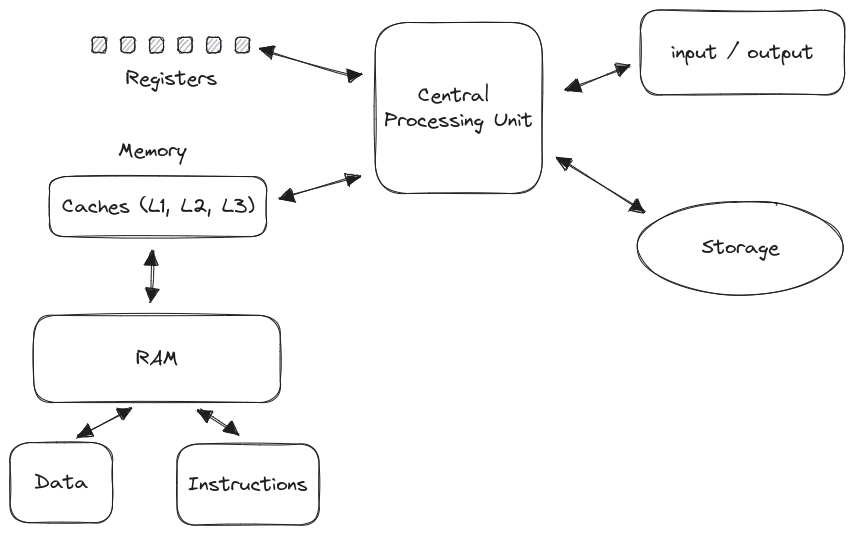Notes on Assembly Language
Just some notes on my assembly language learning journey. It could be a little messy, hopefully, it can be of help to future self and others.
Chips (CPUs) use instructions to manipulate binary data, we call this machine code. It is often represented as hexadecimal.
Different manufacturers have their own set of instruction set. The most popular set, is the Intel x86 chip instruction set. There are also two commonly known instruction set, ARM chip, which is the most popular mobile phone chip; and Atmel chip, which appears in many small IoT type devices. This learning journey will focus more on the Intel x86 chip.
CPU uses a set of registers, special areas of the chip, which are able to manipulate bits. For example, instruction to add 28 to a register called ESP will be coded in machine language as 83 C4 1C. This is tricky for us - humans. Although many low level programs can write machine code directyly. It is more common to use mnemonics to represent the various parts of instructions, which is what is known as the assembly language. The above machine code can be written in assembly language as ADD ESP, 1C.
- Machine code:
83 C4 1C - Assembler:
ADD ESP, 1C
Therefore, a proper squence would be:
- We code in assembly language, e.g.
ADD ESP, 1C - A programme called Assembler, converts this mnemonic form back
machine code,83 C4 1C - CPU executes it :D
Fun fact: a register is a group of latches which holds a single number. The number of bits in a register is called its width.
Type of assemblers:
- Microsoft MASM32 (32bit) and MASM64 (64bit)
- MASM32 SDK project (a project developed based on Microsoft MASM32 but a simpler version)
- GoAsm
Basic Instruction Categories:
- Load and store: These instructions move data between registers and memory locations. These include basic move and store instructions and some more esoteric instructions such as sign extensions as well as data exchange instructions.
- Computational: This is the set of instructions used to add, subtract, multiply and divide which provide the computational capability of the chip. Including signed and unsigned operations Packed Decimal Format operations, floating point operations, increment and decrement operations.
- Logical: These are bit wise or logical operations. They are special forms of manipulation at the bit level such as shifting, adding or calling, etc. They are used for a variety of purposes including extracting parts of a memory location a process known as masking.
- Control flow: This category is that involving instructions which change the flow of execution of the programme. The most basic form of coding is to perform an instruction move to the next sequential instruction location and perform that instruction. However, we also need to make decision on whether to move to the next instruction or to take an alternative path. We do this using a set of instructions which change the control flow. This include if statements, looping instrctions and sub programme calls.
Advance Instruction Categories:
- Advance Encryption Standard (AES)
- 128-bit packed decimal instructions
- 256-bit and move vector instructions
